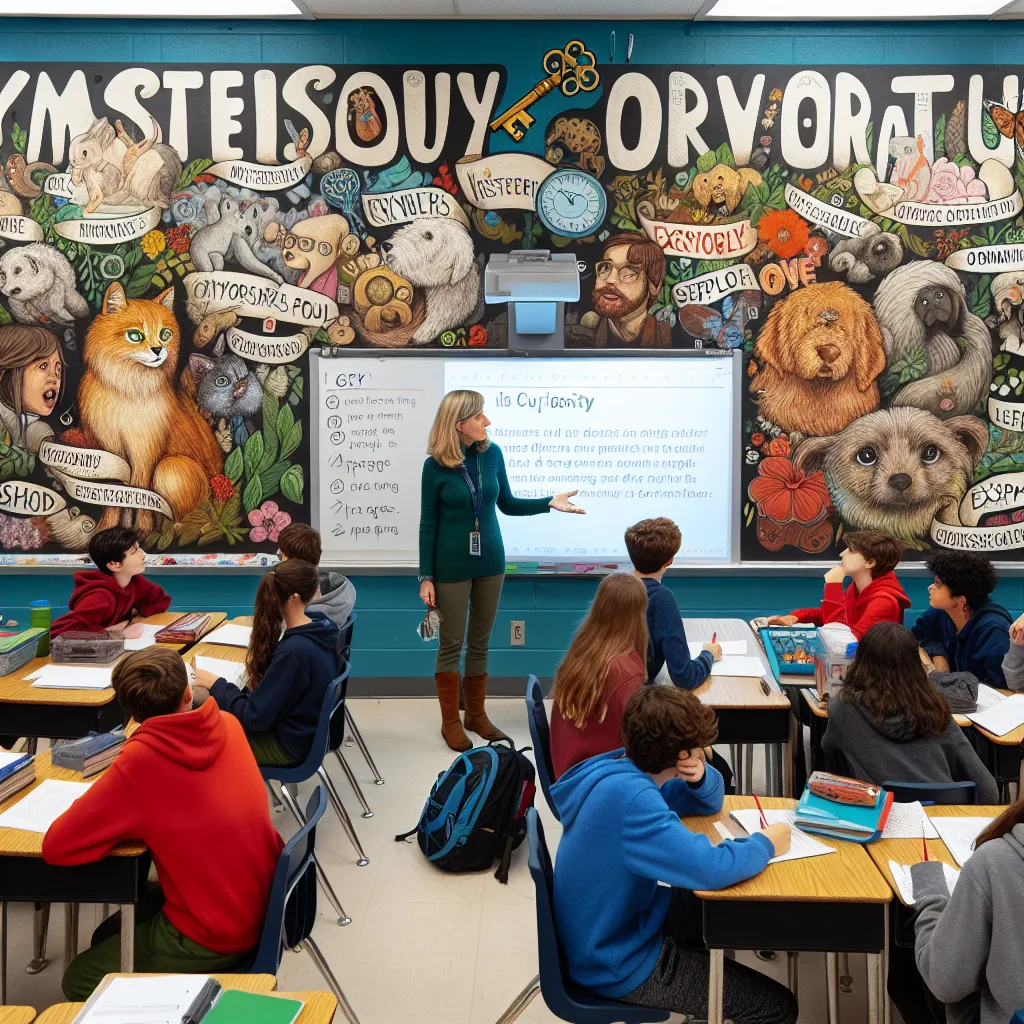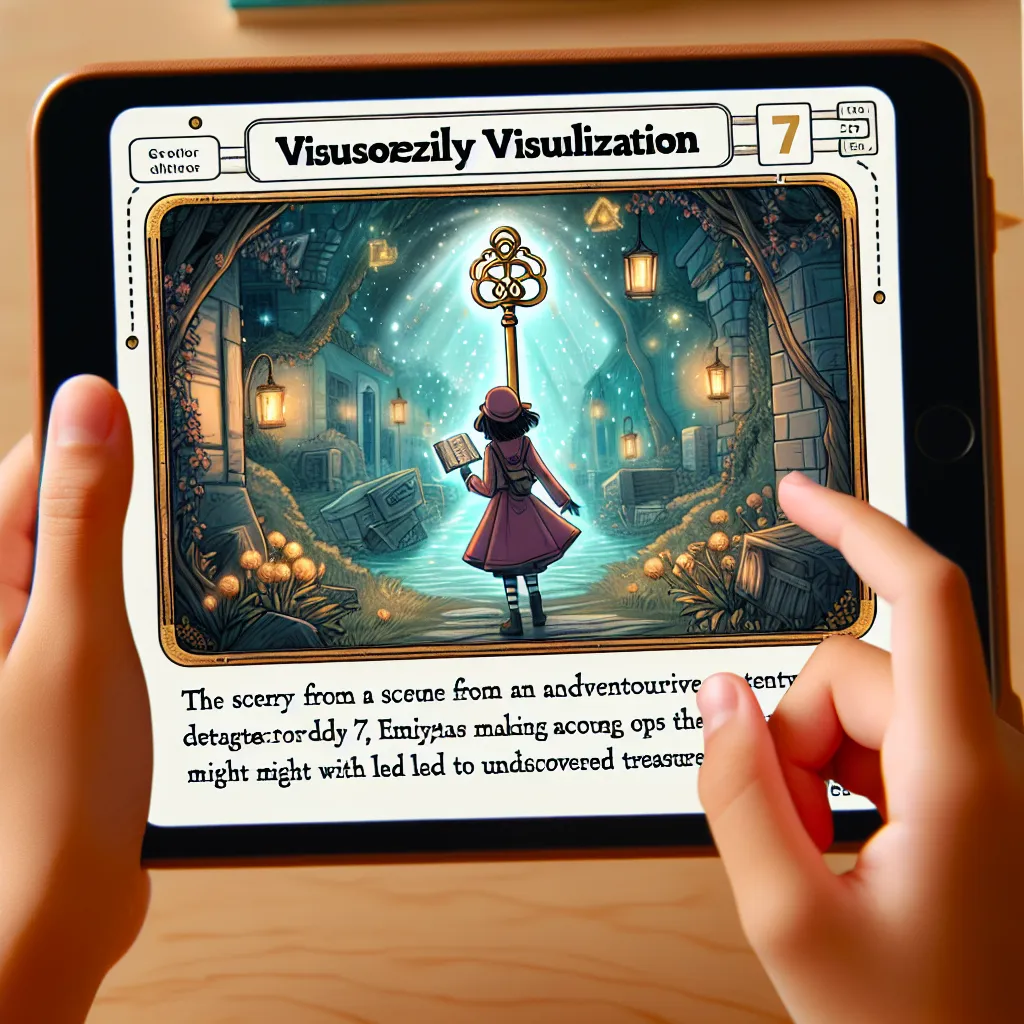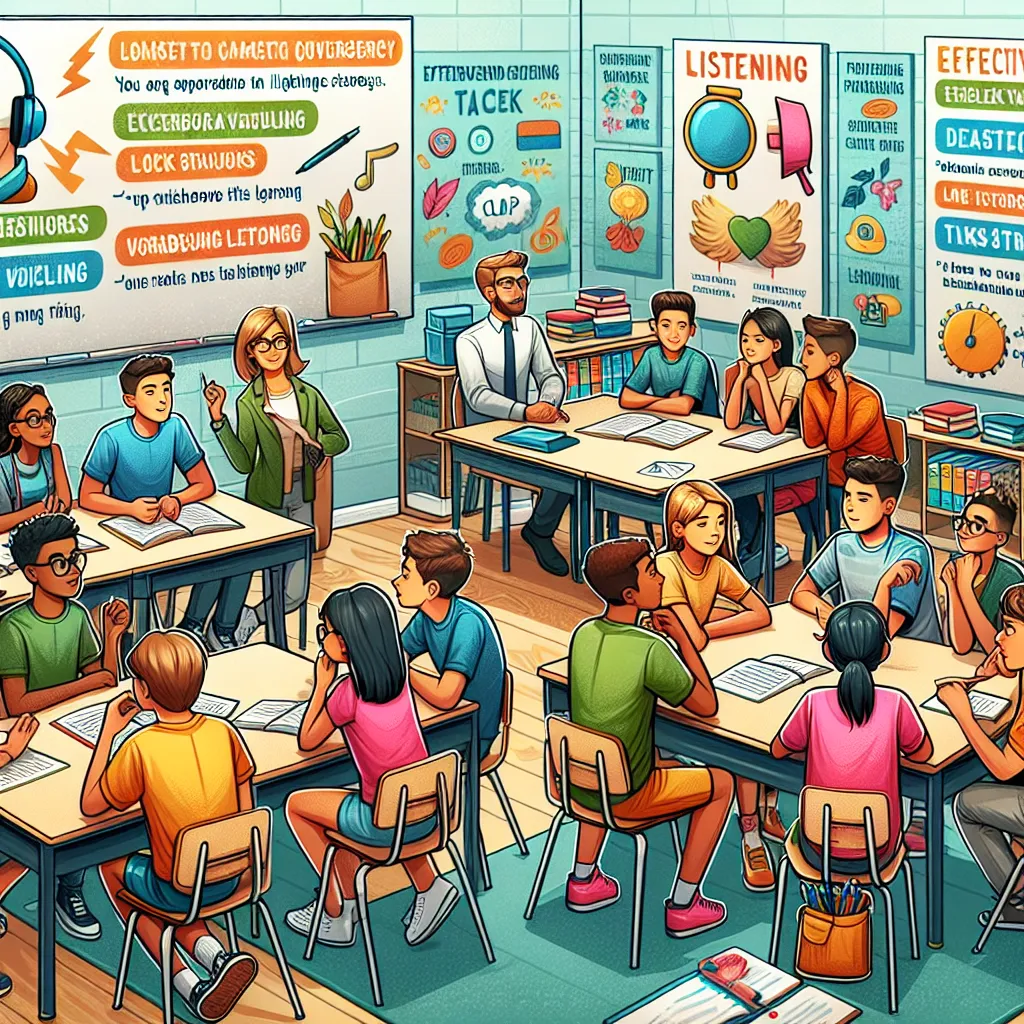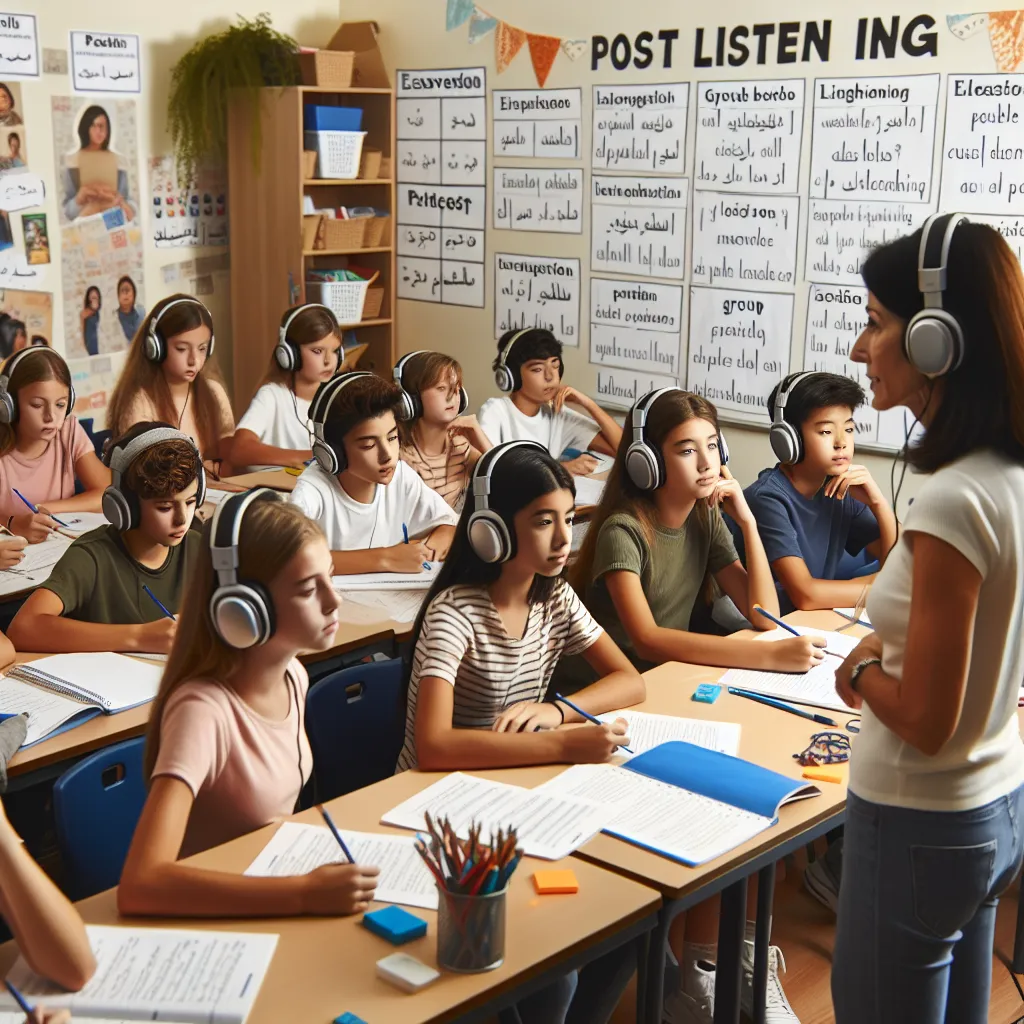Ask AI on The Internet
Question: Here's a short extract designed to help grade 7 students develop their listening skills. This passage could be read aloud by the teacher, then followed up with some comprehension questions: --- *Extract:* "Once upon a time, in a small village nestled between rolling hills, there was a little girl named Emily. Emily had a curious mind and a love for adventure. Every morning, she would set out to explore the nearby forest, accompanied by her loyal dog, Max. One day, while wandering deeper into the woods than ever before, Emily stumbled upon a mysterious, old key lying on the ground. The key was ornate, with intricate designs etched into its metal surface. Holding the key tightly in her hand, she felt a sense of excitement and wonder. What could this key possibly unlock? With Max by her side, Emily was determined to find out." --- *Listening Comprehension using this extract Listening is a foundational skill in the process of learning any language. In an essay, explain how you would teach listening to a grade 7. The techniques and strategies you will use to help students focus on specific aspects of the listening material. Consider how you will keep students engaged and what you want them to extract from the listening.
Teaching listening skills to grade 7 students entails not only improving their ability to grasp spoken language but also engaging them actively in the process. Using the provided extract, we can outline several techniques and strategies to enhance listening comprehension effectively. ### Objectives of Listening Comprehension Exercises: 1. **Enhance Focus:** Train students to listen for specific details and main ideas. 2. **Encourage Active Listening:** Promote engagement and participation during listening activities. 3. **Develop Critical Thinking:** Encourage students to make inferences and predictions based on the story. 4. **Improve Vocabulary:** Introduce new words and phrases in context. ### Techniques and Strategies: 1. **Pre-Listening Activities:** - **Context Setting:** Provide background information about the story's setting and characters. For example, explain what a village nestled between hills might look like or discuss what adventures in a forest might involve. - **Predictive Questions:** Ask students to predict the content of the story based on its title or the first sentence. For instance, “What do you think Emily might find in the forest during her adventure?” - **Key Vocabulary:** Highlight a few challenging words (e.g., 'ornate', 'intricate', 'determined') and discuss their meanings. 2. **During Listening Activities:** - **Focused Listening:** Have students listen to the extract for specific information, such as names, places, and objects. Questions might include: "What was the girl's name?" "Who accompanied her on her adventures?" "What did she find in the forest?" - **Note-Taking:** Encourage students to jot down key points or unfamiliar words they hear during the reading. This helps maintain attention and provides material for later discussion. 3. **Post-Listening Activities:** - **Comprehension Questions:** Pose questions to test understanding. For example: - "Why did Emily feel a sense of excitement when she found the key?" - "What do you think the intricate designs on the key signify?" - "Where do you think Emily will go next with the key and Max?" - **Discussion:** Engage students in a group discussion to share their answers and thoughts about the story. This collaborative activity helps them understand different perspectives and reinforces their comprehension. - **Creative Extension:** Ask students to write or present their own continuation of Emily’s adventure. This encourages them to think critically and creatively about the story. ### Engagement Strategies: - **Interactive Listening:** Incorporate pauses during the reading to allow students to predict what might happen next. - **Visual Aids:** Use illustrations, maps, or diagrams to help students visualize the story setting and characters. - **Role Play:** Have students act out parts of the story. This kinaesthetic activity can be particularly effective in reinforcing comprehension through dramatization. - **Technology Integration:** Use digital tools, such as audio recordings, to provide varied listening experiences and cater to different learning styles. ### Desired Outcomes: - **Enhanced Listening Skills:** Students will be better at focusing on and extracting specific information from spoken language. - **Extended Vocabulary:** Exposure to new words in context will improve their language skills. - **Improved Critical Thinking:** Students will develop their ability to infer and predict, which are crucial for deeper comprehension. - **Increased Engagement:** By integrating varied activities and catering to different learning styles, students will find listening activities more enjoyable and engaging. In conclusion, teaching listening skills to grade 7 students using engaging and varied strategies can significantly improve their comprehension and language abilities. The provided extract serves as an excellent foundation for developing focused listening activities that are both educational and enjoyable.
Think your answer is better than the AI's? Post it below.
Other Most Relevant Posts:
Question Tags
If you want your question answered by an AI, click here.







Post your own comment: